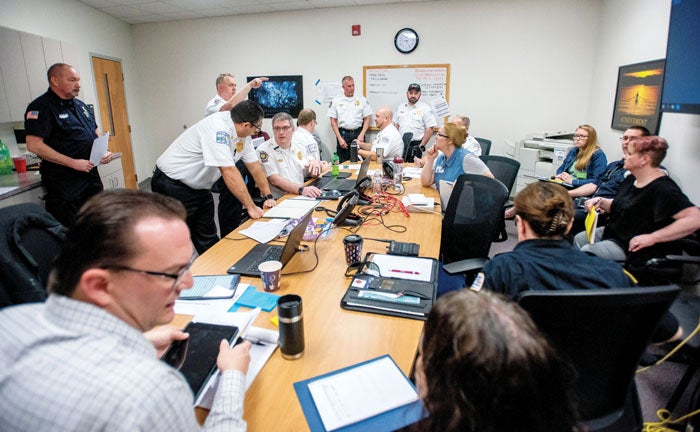Behind the scenes: Group gathering to discuss emergency plans amid coronavirus outbreak
Published 6:20 pm Thursday, March 19, 2020

- JON C. LAKEY/SALISBURY POST Rowan County health officials held an Operational Period Briefing at the Rowan County Health Department. Those involved include agencies tasked with the safety of Rowan County residents in the midst of the coronavirus pandemic.. Salisbury, NC , 3/19/20
By Shavonne Potts
shavonne.potts@salisburypost.com
SALISBURY — Since early February, the Rowan County Health Department and Emergency Management Division have been monitoring the coronavirus pandemic.
On Thursday, the agencies gathered to discuss its operational plans and logistics as the county saw its first case of COVID-19, the disease caused by the virus. The collaboration brings together emergency medical services, fire, emergency management services and health department leaders in a unified command structure to determine the latest as the concerns amid the outbreak grows.
“The command system was created by FEMA. Pretty much everyone in the nation is doing this exact process, the exact same way. So that makes it easier for us to work with neighboring counties,” said Rowan County EMS Capt. Chris Lambert.
The group creates what’s called an incident action plan, which is a similar structure that communities are conducting throughout the nation.
“Today was the first day of a new IAP that we built yesterday that will run through Monday. At the end of the continual planning process, we do an operational briefing,” Lambert said.
The plan brings key players in the different agencies together to discuss what will occur within the next several days. The plan includes objectives established by the incident commander and strategies on how to carry out the plan if there should be a positive COVID-19 case in Rowan County, the first of which was announced Thursday.
“It just allows us all to be on the same page to make sure we are operating the same for the next couple of days,” Lambert said.
As planning section chief, Lambert’s job is to begin working on the next action plan that is expected to start this coming Monday.
“So once the planning process is over, we had the plan created; we start working with that plan. The planning process starts back over and we start working toward the next,” he said.
The plan period depends on the incident. An active incident — a train derailment, for example — could take 12 hours to follow through.
“We are doing everything we can to keep people safe,” Lambert said.
He encouraged people to listen to guidance from federal, state and local partners.

